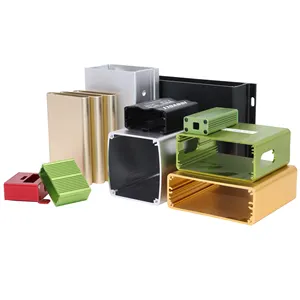
All categories
Featured selections
Trade Assurance
Buyer Central
Help Center
Get the app
Become a supplier














Tại Alibaba.com, bạn sẽ khám phá một bộ sưu tập khổng lồ về. ốp micro atx có sẵn với các giao dịch hấp dẫn và phù hợp với các ứng dụng đa dạng .. ốp micro atx rất cần thiết trong việc kết hợp và bảo mật hầu hết các thành phần của máy tính cá nhân. Để thực hiện các chức năng của mình một cách hiệu quả ,. ốp micro atx phải có các thuộc tính mong muốn để máy tính hoạt động hiệu quả. Chúng được áp dụng trong các lĩnh vực khác nhau, chẳng hạn như trong máy tính cá nhân, trong kinh doanh và trong các tổ chức.
Những. ốp micro atx có những vật liệu tuyệt vời chắc chắn và mạnh mẽ để chịu được lực cơ học và bảo vệ các thành phần máy tính tinh vi. Các vật liệu đảm bảo rằng tất cả. ốp micro atx bền để cho phép máy tính hoạt động tối ưu trong một thời gian dài. Với thiết kế sáng tạo, các. ốp micro atx thúc đẩy khả năng làm mát và phân phối nhiệt tuyệt vời đồng thời đẩy lùi bụi và các vật chất dạng hạt khác có thể làm trật bánh.
Nhiều lựa chọn. ốp micro atx tại Alibaba.com xem xét tất cả các thông số kỹ thuật và nhu cầu của những người dùng khác nhau. Theo đó, tất cả các kích thước, màu sắc và kiểu dáng của. ốp micro atx có sẵn để bạn lựa chọn. Tất cả chúng đều có chất lượng cao nhất vì những người bán được chứng nhận đăng ký trên trang web tuân thủ các tiêu chuẩn quy định. Những cái này. ốp micro atx cung cấp đủ không gian cho bộ cấp nguồn, khoang ổ đĩa và bảng điều khiển phía sau chứa các đầu nối ngoại vi.
Tận hưởng tất cả các tính năng này bằng cách xác định rõ nhất phù hợp với bạn tại Alibaba.com. Khám phá khác nhau. ốp micro atx và tìm kiếm từ khóa đáp ứng nhu cầu của bạn một cách hoàn hảo. Tất cả. Người bán ốp micro atx trên trang web cung cấp các sản phẩm hàng đầu đảm bảo rằng bất kể bạn chi bao nhiêu tiền; bạn sẽ thu được lợi nhuận tối đa.